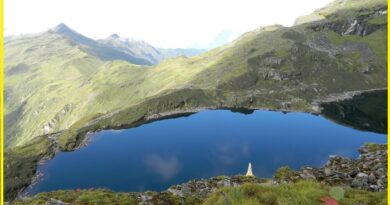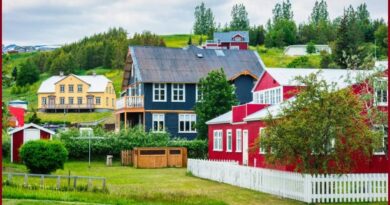An Extraordinary Sandstone Feature in Germany- The Externsteine Rock
Externsteine
Externsteine Rock is a unique rock formation located in the Teutoburg Forest in northwestern Germany. It is a popular tourist attraction and is considered to be one of the most important natural landmarks in the country. Externsteine is a series of tall, vertical sandstone pillars that rise up from the surrounding forest. The formation has been eroded by wind and water over millions of years, creating a series of caves, fissures, and rock formations that are now popular among hikers, climbers, and nature enthusiasts.
Externsteine rock Germany has a rich cultural history and has been used by various groups over the centuries. It is believed that the area was used as a site for religious rituals by the ancient Germanic tribes, and later by early Christians as a site for pilgrimage. Today, the area is popular with new age and pagan groups, who see the rock formation as a sacred site.
Externsteine rocks of the Teutoburg Forest consists of 13 rugged sandstone rock columns that reach up to 40 m in height. The unique natural formation is located near Horn-Bad Meinberg in North Rhine-Westfalia and consists of a hard, erosion-resistant sandstone depsoited during the early Cretaceous era about 100 million years ago. The rocks consist stairs and caves incorporated into the rock formation. Some of the rocks are walkable by steps and bridges.

How Externsteine Rock forms
The Externsteine Rock is one of the most remarkable examples of the Lower Cretaceous sedimentary strata of Osning-Sandstone. Osning is an old term for the Teutoburg Forest and the Egge Hills (Lower Saxon Hills or Eggegebirge).
The Osning-Sandstone formed during the Lower Cretaceous with the deposition of sand along the northeastern coastal region of the Münsterland Cretaceous Basin. The sediments accumulated over a couple of million years during several transgressive and regressive periods of the sea level and the coastline. Estuary, beach, tidal flat and shelf sands were deposited.

The tectonic evolution started earlier on during the Jurassic period when the rocks were faulted and fractured into blocks. The main phase of tectonic activity occurred at the end of the Mesozoic in the Upper Cretaceous period when strata faulted and in some instances steeply tilted block, which are characteristic features of the Osning-Sandstone of the Externsteine Germany. Over millions of years the exposed surface due to the intense erosion process forms the today rock pillar.
Also read- Secrets To Getting Eifel Volcanic Field Germany
Externsteine Camping
There is no camping allowed at the Externsteine Rock Germany itself as it is a protected natural and cultural area. However, there are several campsites located in the surrounding Teutoburg Forest where visitors can stay. One of the nearest campsites is Campingpark Extertal, which is located about 20 minutes by car from the Externsteine Rock. This campsite offers tent and caravan pitches, as well as rental accommodations such as mobile homes and apartments.
Another option is the Waldcamping Extertal, which is about a 30-minute drive from the Externsteine rock. This campsite is located in a wooded area and offers tent and caravan pitches, as well as rental cabins and caravans.
Both campsites offer a range of facilities, including showers, toilets, laundry facilities, and playgrounds. Visitors can also enjoy hiking and biking trails in the surrounding forests, as well as other activities such as swimming, fishing, and horseback riding.

How to reach Externsteine Germany
The nearest train station to Externsteine is in the city of Detmold, which is served by regional trains from nearby cities such as Hanover and Bielefeld. From Detmold, visitors can take a taxi or bus to Externsteine rock. Externsteine Rock is located about 20 minutes by car from the city of Detmold, which is approximately 90 minutes by car from both Cologne and Hanover. There are also several bus services that operate from Detmold to Externsteine, including the TeutoBus and BusBahnBielefeld.



